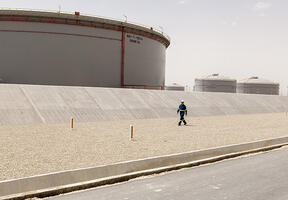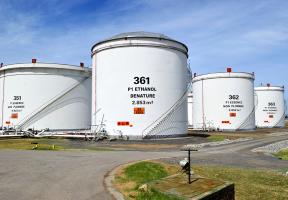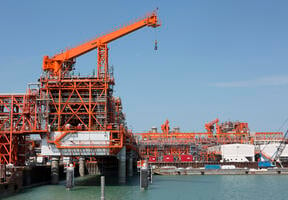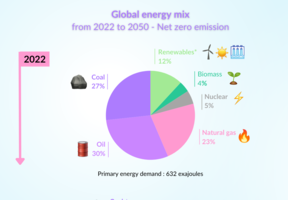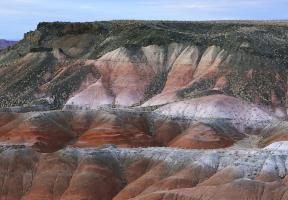How Oil and Gas Deposits Are Formed
5 min read
Deep in the Earth, oil and natural gas are formed from organic matter from dead plants and animals. These hydrocarbons take millions of years to form under very specific pressure and temperature conditions.

© THINKSTOCK - Hydrocarbons formed over millions of years, in major geological folds.
When a living organism dies, it is generally recycled in one of two ways:
- It is eaten by predators, scavengers or .
- Through exposure to ambient air or oxygen-rich water, it oxidizes. That means that the , carbon, nitrogen, sulfur and phosphorus contained in the matter combine with oxygen atoms present in the air. The organic matter breaks down into water (H2O), carbon dioxide (CO2), nitrates, sulfates and phosphates that nourish new plants.
The Slow Formation of Source Rock
A tiny proportion of this organic matter — about 0.1% — escapes this fate. Transported by water, it sometimes sinks to the bottom of the sea or large continental lakes. It is partly preserved in these poorly oxygenated environments, well away from tidal currents. It mixes with inorganic matter, such as clay particles and very fine sand, and with dead marine plankton (microscopic organisms). This mixture is transformed into dark, foul-smelling mud by bacteria.
Over time, this mud accumulates and hardens. Mud that contains at least 1 to 2% organic matter may be transformed into source rock, which eventually produces oil and gas deposits. This percentage may seem low, but that is because one or more specific requirements are necessary to enable the process to take place:
- A hot climate that is conducive to the growth of large quantities of plankton.
- A location near the mouth of a major river carrying a lot of plant debris.
- No nearby mountains that could limit the volume of inorganic sediment within the rock.
Source Rock Subsidence
The weight of accumulating sediment very slowly pushes the source rock further under the Earth's crust, by a few meters to a few hundred meters every million years or so. This gradual sinking is called and leads to the formation of sedimentary basins.
As it sinks below ground, the source rock is subjected to increasingly high temperatures, the organic matter that makes up the rock is crushed by the weight of the accumulating sediments, and the pressure increases by 25 bar every 100 meters on average. At one kilometer underground, the temperature is 50°C and pressure is 250 bar.
Under these physical conditions, the nitrogen, sulfur and phosphorus atoms are gradually converted into , an intermediate material made up of water, carbon dioxide, carbon and hydrogen, which is then transformed into oil or gas.
How Oil and Gas Forms
At a depth of 2,000 meters, when the temperature reaches 100°C, kerogen starts to release hydrocarbons:
- Between 2,000 and 3,800 meters, it turns into oil. This depth interval is known as the oil window.
- When the source rock sinks further, to between 3,800 and 5,000 meters, production of liquid hydrocarbons peaks. The liquids produced become increasingly lighter and gradually turn into methane gas, the lightest hydrocarbon. This depth interval is known as the gas window.
- There are no hydrocarbons below a depth of 8 to 10 kilometers, because they are destroyed by the high temperature.
The proportion of liquids and gas generated in this way depends on the type of source rock. If the organic debris is composed mostly of animal origin, it will produce more oil than gas. If it is composed mainly of plant debris, the source rock will produce mostly gas.
With an estimated average sedimentation of 50 meters every million years, it takes 60 million years for dead animals to become liquid hydrocarbons. It is hardly surprising, therefore, that oil is classified as a non- source.
These slowly formed hydrocarbons then embark on a long journey upward. Learn how they migrate to the surface.



